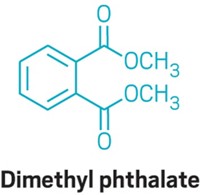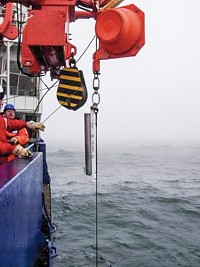Advertisement
Grab your lab coat. Let's get started
Welcome!
Welcome!
Create an account below to get 6 C&EN articles per month, receive newsletters and more - all free.
It seems this is your first time logging in online. Please enter the following information to continue.
As an ACS member you automatically get access to this site. All we need is few more details to create your reading experience.
Not you? Sign in with a different account.
Not you? Sign in with a different account.
ERROR 1
ERROR 1
ERROR 2
ERROR 2
ERROR 2
ERROR 2
ERROR 2
Password and Confirm password must match.
If you have an ACS member number, please enter it here so we can link this account to your membership. (optional)
ERROR 2
ACS values your privacy. By submitting your information, you are gaining access to C&EN and subscribing to our weekly newsletter. We use the information you provide to make your reading experience better, and we will never sell your data to third party members.
Pollution
Measuring microplastics in seafood
Analysis identifies the polymer types and concentrations found in seafood, including oysters, prawns, crabs, squid, and sardines
by Lakshmi Supriya, special to C&EN
August 7, 2020

Fish and other types of seafood not only provide people with nutrition but also with doses of tiny plastic particles, or microplastics. A new study reveals just how much and what types of microplastics may come with a serving of oysters or sardines (Environ. Sci. Technol. 2020, DOI: 10.1021/acs.est.0c02337). The analysis method could help reveal the extent of contamination in seafood and aid risk assessments to consumers, the researchers say.
Microplastics come from plastic pollution that gets broken down in the ocean and is then ingested by marine animals. Researchers usually identify particles by manually separating them from the animal tissue, suspending the particles in a solvent, and then analyzing them using spectroscopic techniques such as infrared or Raman spectroscopy. Although these methods provide information about the plastic types and particle counts in an animal, they usually cannot tell how much microplastic by weight is present.
Previously, Francisca Ribeiro of the University of Queensland and University of Exeter and her colleagues used a pyrolysis-gas chromatography/mass spectrometry (GC/MS) technique to quantify and identify microplastics in treated sewage sludge (Sci. Total Environ. 2020, DOI: 10.1016/j.scitotenv.2020.136924). The team has now adapted this technique to analyze microplastics in seafood. “The main advantage of the method is reporting plastic mass concentrations,” Ribeiro says. This will help in creating standard methods for detecting and reporting microplastics in food, she says.
For this study, the researchers purchased raw oysters, tiger prawns, crabs, squid, and sardines from a fish market and prepared samples for testing by breaking down the edible parts with an alkaline solution. They then filtered out the solids, extracted the plastics with a solvent, and used pyrolysis-GC/MS to identify five common polymers in marine plastic waste: polyvinyl chloride, polyethylene, polystyrene, polypropylene, and poly(methyl methacrylate).
After analyzing the results, the researchers found that sardines had the highest concentration of microplastics, predominantly polyethylene. A 100 g serving of sardines could potentially have 30 mg of microplastics, their analysis showed. Squid had the lowest concentration, 0.7 mg per 100 g serving. The team found polyvinylchloride in all the samples and polypropylene in all the foods except oysters. The other three polymers were found in sardines and crabs.
The sample preparation and extraction method makes it easier and less time consuming to isolate microplastics from complex natural materials than the previous methods of physically separating the microplastics from the biological and organic matter, says Barbara M. Scholz-Böttcher of Carl von Ossietzky University of Oldenburg, who was not involved in the research. “This is very attractive when combined with pyrolysis-GC/MS for routine laboratories, in particular.” However, the technique does not provide the particle count or size, which are very important in ecotoxicology studies, she says. In addition, the technique does not recover enough poly(ethylene terephthalate), the ubiquitous plastic of bottles and textiles, for the researchers to identify that polymer in the seafood samples.
There is still no consensus on whether microplastic particle count or concentrations should be reported to come up with toxicity thresholds, says Chelsea M. Rochman of the University of Toronto, who was not involved in the study. “Until then, this data helps us by putting forth a novel method and providing more evidence that there are microplastics in seafood.”




Join the conversation
Contact the reporter
Submit a Letter to the Editor for publication
Engage with us on Twitter